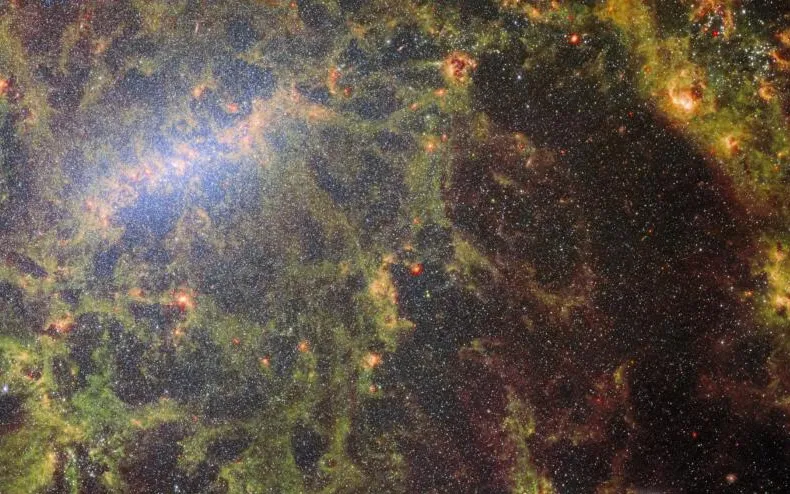Webb Telescope unveils stunning images of star formation in Virgo constellation
Every few weeks, NASA, the European Space Agency (ESA), and the Canadian Space Agency (CSA) release breathtaking images from the James Webb Space Telescope that enhance our understanding of the universe. The most recent image showcases the barred spiral galaxy NGC 5068, which is named for the prominent central bar visible in the upper left of the image. This composite image is created using infrared images captured by the telescope’s MIRI (Mid-Infrared Instrument) and NIRCam (Near-Infrared Camera) sensors.
These sensors have recorded the galaxy in the constellation Virgo, about 20 million light-years from Earth, and because JWST can see through the dust and gas surrounding stars as they are born, the instrument is particularly well-suited to producing images that show the star formation process.
Examining the two individual images that make up the composite reveals the different layers of the galaxy. As Gizmodo points out, the image produced by the MIRI probe provides a view of the structure of the galaxy and the glowing bubbles of gas representing newly formed stars.
Another NIRCam image focuses on the huge star cluster in the foreground. At the same time, the combination shows both the huge number of stars in the region and the most visible stars that have just been “born”.
There is not one hack in this picture; Instead, NASA notes that this is part of a larger effort to collect as many images of star formation in nearby galaxies as possible. (No, 20 million light years doesn’t seem very close to me, but that’s how things work in space.) In a few other images, NASA pointed to other “gems” from its star-born collection, including this impressive “Phantom.” Galaxy.” that was shown last summer. What does the agency hope to learn? Simply put, star formation “underpins many areas of astronomy, from the physics of faint interstellar plasma to the evolution of entire galaxies.” NASA goes on to say that it hopes that data collected on galaxies like NGC 5068 will help ” to initiate” major scientific developments, although what may remain a mystery.




